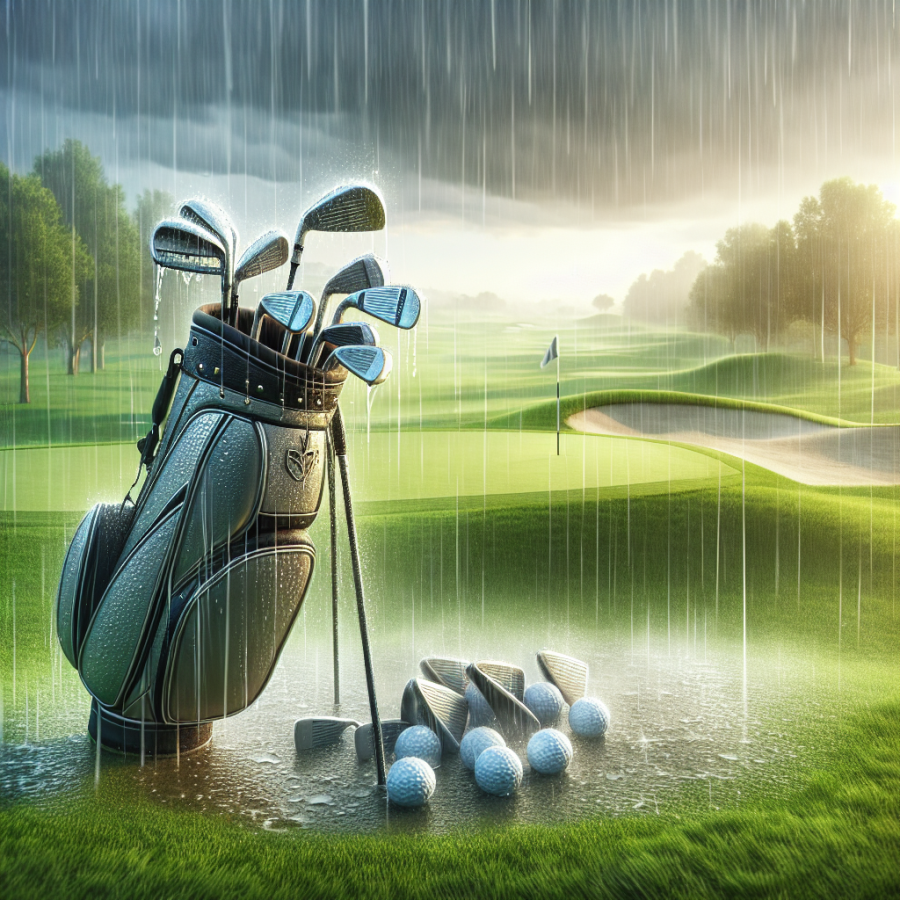Understanding the Effects of Moisture on Golf Clubs
One of the most important aspects to consider when handling golf clubs is the potential impact of moisture. Moisture can have tremendous effects on the performance and durability of your precious clubs. Though all golfers wish for clear skies and a bright sun on the green, more often than we’d like, we’re faced with dewy morning games or unexpected rain showers. In these instances, understanding how moisture affects your golf clubs is crucial.
Golf clubs are made up of a combination of different materials, each of which reacts differently to contact with water. An important aspect to know is that a club's reaction to moisture largely depends on its material makeup. For instance, clubs made of steel will be less likely to be affected by moisture than those made of wood or iron.
When exposed to moisture, golf clubs made of iron and wood can rust or corrode over time. Rust, which is an iron oxide, forms on iron or steel clubs in the presence of moisture and air. This rust can deteriorate the overall performance of the club, reducing its lifespan and potentially affecting your game.
Water can particularly damage wooden clubs by causing the wood to expand and become distorted. Not only will this alter the club's shape, but it can also throw off your swing and detract from the overall lifespan of the club.
Moisture can also interfere with the grip of your golf club, which plays a significant role in controlling your shots. Wet grips can make the club more prone to slippage, leading to inaccurate swings and possibly causing injuries due to lack of control.
Moreover, if your clubhead becomes saturated with water, it can drastically change the weight distribution of the club. Even the smallest increase in the clubhead’s weight can lead to changes in swing speed and the angle of impact with the ball, impacting overall performance.
Golf balls also react differently when hit with a wet club. When a club is wet, it reduces the amount of friction between the club and the ball. This can lead to a decrease in ball spin, causing it to travel in unpredictable patterns.
One more thing to consider is that moisture-laden clubs can often become heavier. This additional weight can in turn affect your swing speed and club control, causing inconsistent shots.
Speaking about club care, remember that excessive moisture can also damage golf club storage bags. Many bags are not designed with waterproof properties, and soaked clubs can lead to mold and mildew build-up within the bag.
Read also:
Mastering the Waves: A Comprehensive Guide to Windsurfing
Preventing and Managing Wet Golf Club Damage
Golf clubs can indeed get wet and significantly damaged if proper precautions are not taken. When clubs encounter moisture over an extended period, different components, such as the grips, shafts, and clubheads, can become compromised.
One of the areas where moisture poses the most considerable risk is in the grips. Golf grips are typically made from materials designed to foster improved traction and better control. However, when exposed to water, these grips can become slick and challenging, leading to a higher likelihood of mishits. More significantly, continued exposure to water can result in the deterioration of the grip material itself.
Shafts, both steel and graphite ones, may also be subject to damage from moisture. For example, steel shafts can rust, leading to potential breakage when used. Graphite shafts, on the other hand, could delaminate, meaning the layers of material within the shaft gradually separate. This delamination can lead to a change in the shaft’s flex, affecting the overall performance of the club.
Clubheads of both irons and woods are susceptible to damage from dampness. The attachments of these elements to the shaft, as well as their ability to strike the ball effectively, can be impaired by repeated or prolonged exposure to moisture. Most clubheads are made from materials that, while sturdy, aren't entirely water-resistant- such as various types of steel, titanium, or other alloys. As such, these materials can rust or corrode over time, which can degrade their performance.
The good news, however, is that preventing and managing wet golf club damage is entirely doable with a few simple routines.
Start by minimizing exposure to moisture as much as possible. Store your clubs in a dry, temperate environment when they're not in use, as this will go a long way in inhibiting any moisture-related damage. Additionally, consider using head covers to protect your clubs from rain during a rainy round.
After exposure to wet conditions, it's essential to thoroughly dry your clubs. Use a clean, dry cloth to wipe down the grips, shafts, and clubheads. Be sure to also clean the grooves of the clubheads, as these areas can harbor water and lead to rust.
For the proactive golfer, regular maintenance and conditioning of your clubs can better keep moisture damage at bay. Specific products, like grip conditioners, can extend the life of the grip material and prevent it from degrading due to moisture.




